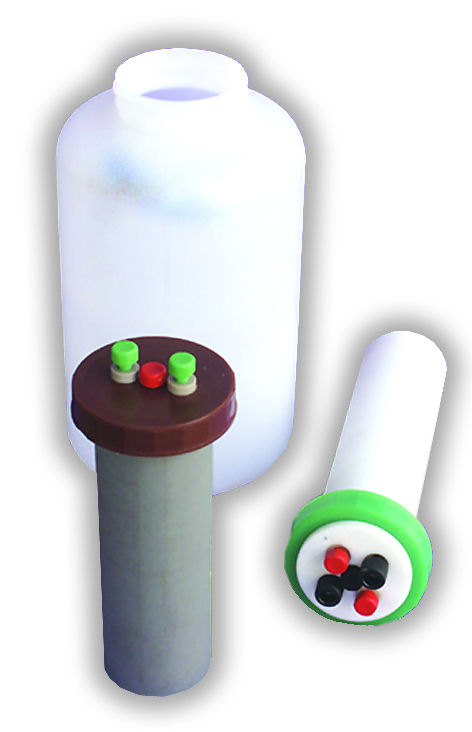- It is used in anion analysis instead of a suppression column.
- Minimum dead volume.
- Extremely easy regeneration procedure.
- The ability to work in flowing and non-flowing modes.
The principle of operation of capillary membrane suppression systems is based on the property of selective ion conductivity of the ion - exchange membrane-the wall of an ion-exchange capillary. Easy regeneration of the system allows you to significantly increase productivity, and the minimum (about 0.15 ml) dead volume increases the sensitivity of the analysis.
The suppressor consists of a cation exchange capillary placed in a container with 0.05-0.1 M sulfuric acid solution (regenerating solution). The system provides the required level of suppression as long as at least three-quarters of the initial concentration of hydroxonium cations remains in the outer space.
The regeneration process in the case of a non-flow option is reduced to replacing the regenerating solution in the tank. In the flow-through version, the regenerating solution is constantly pumped through the external space.
It is used for anion analysis.
| Total dead volume, max | 150 µl |
| Ion exchange capillary length | ≈70cm |
| Regenerating solution, concentration and composition | 0.05-0.1 M H2SO4 |
| Maximum operating pressure | 4 bar |
| Range of eluent operating costs | 0.5-2.2 ml / min |
| Specific electrical conductivity of the standard carbonate / bicarbonate eluent (1.7 mM NaHCO3 / 1.8 mM Na2CO3) after suppression, max | 40 µs/cm |
| Volume of pumped standard carbonate / bicarbonate eluent before changing the regenerating solution with a volume of regenerating solution of 1000 ml and a concentration of 0.1 M H2SO4, not less than | 5 l |
| Volume of regenerating solution tank | 750, 1000, or 200* |
| Overall dimensions (height, diameter) | 190x100** |
*The 200 ml capacity is used when installing the suppressor in a portable ion chromatograph.
* * When using a 1000 ml container for regenerating solution.


